A chainring is a crucial component of any drivetrain, engaging the chain to transfer power to the rear wheel.
As rings with teeth, chainrings may seem like straightforward components. But as with most bike parts, there’s a lot more going on than meets the eye and the different types, sizes and standards of chainring can be confusing.
In this guide, we’ll explain everything you need to know about bicycle chainrings.
What is a chainring?
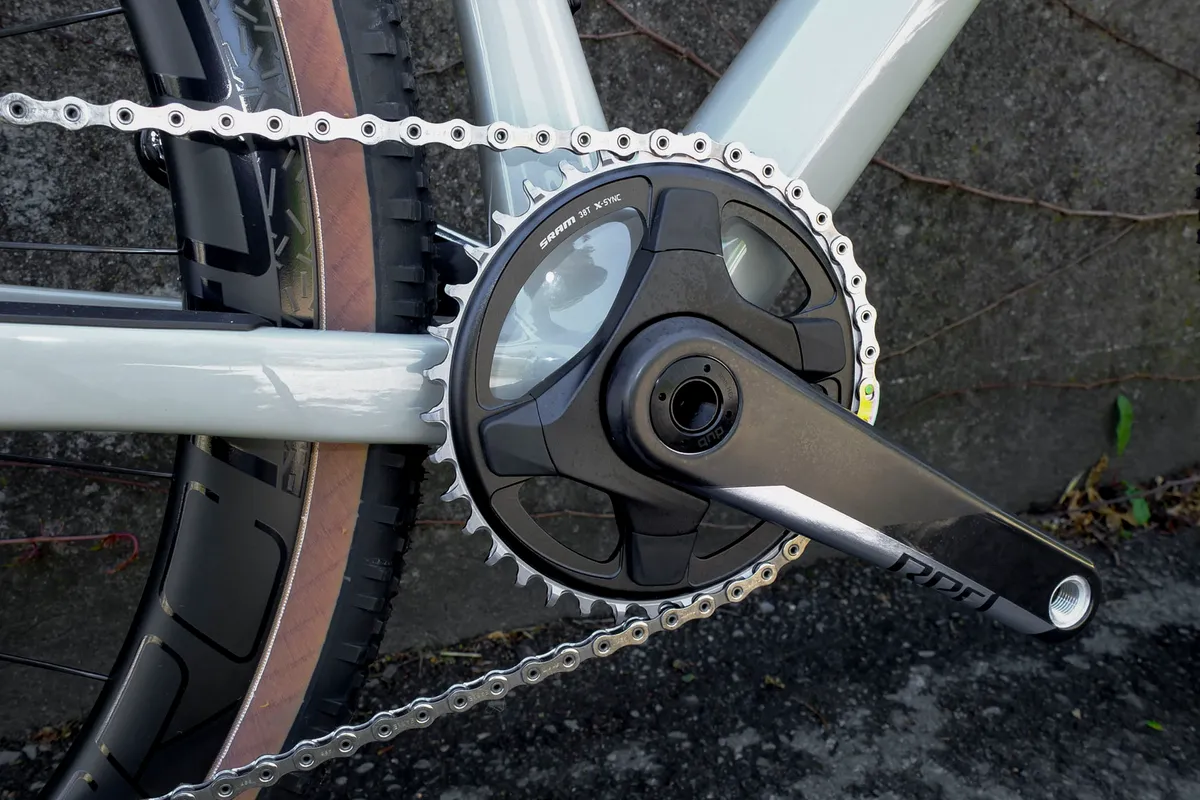
A chainring is essentially a toothed wheel that is attached to the driveside crank arm of your bike.
As the point of contact between the crankset (and pedals) and chain, the primary role of the chainring is to transfer the rider's pedalling energy to the rear wheel through the chain, thereby propelling the bike forward.
Chainrings come in various sizes and configurations, with the number of teeth determining the gear ratio and thereby your pedalling effort.
Larger chainrings generally offer lower (harder) gear ratios, enabling you to achieve higher overall speeds, while smaller chainrings provide higher (easier) gear ratios that offer kinder gears for climbing steep hills.
Types of chainrings
Road, gravel and MTB chainrings
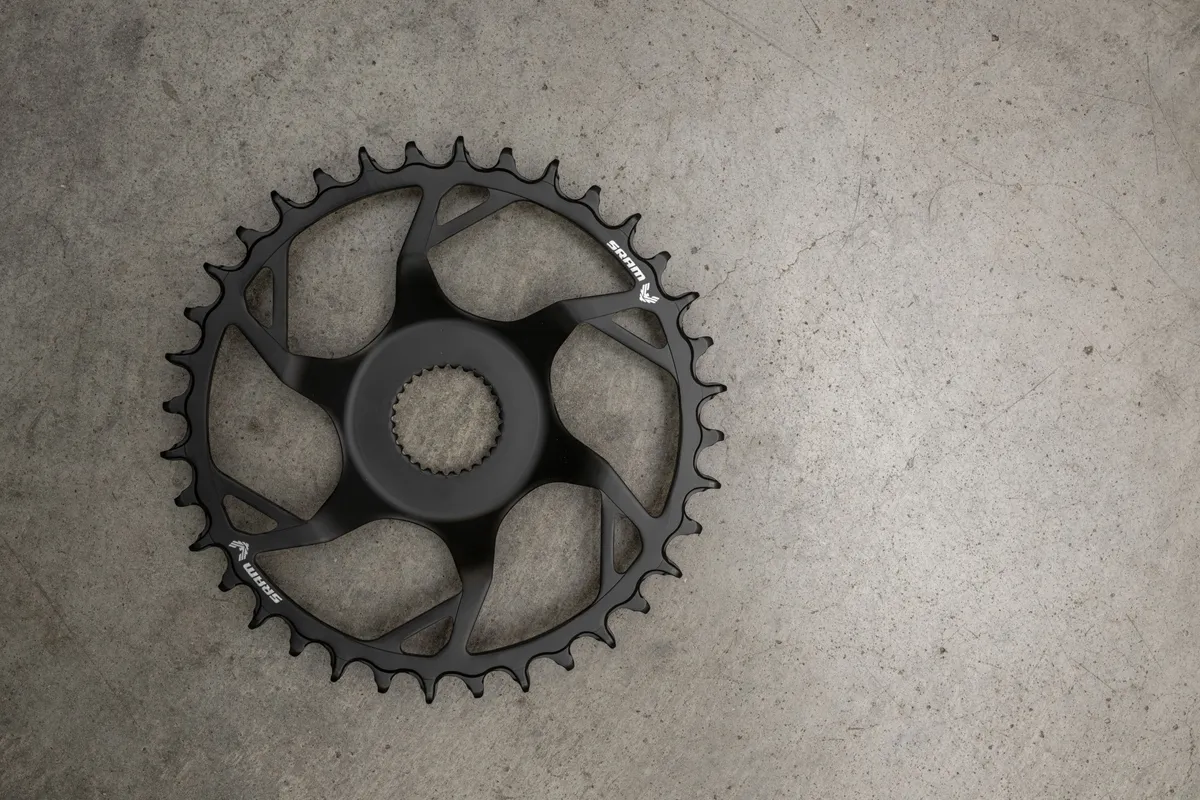
As with many other components, chainring design is discipline-specific.
Road chainrings, for example, are designed with weight savings in mind and are often part of a double-ring crankset with two gears. Therefore, they need to offer smooth shifting performance.
Mountain bike and gravel chainrings, however, prioritise chain retention over weight savings. Because they are typically part of 1x drivetrains, these chainrings don’t need to compromise chain security over shifting performance.
Bolt-on chainrings
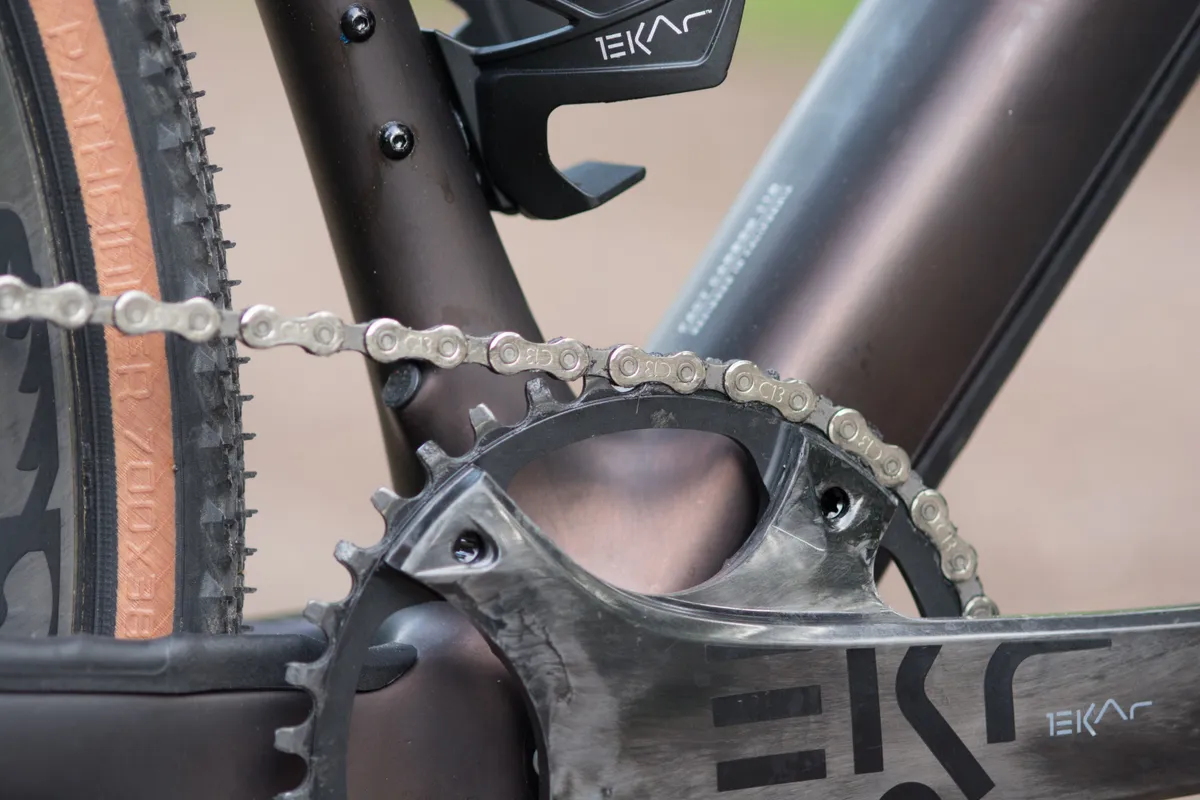
As the name suggests, bolt-on chainrings are a type of chainring that is attached to the crankset using bolts.
Specifically, they attach to the ‘spider’ – arms that radiate from the crankset’s spindle.
Their design makes them relatively easy to install and remove, so they are useful for riders who might frequently switch out their chainring size to suit different terrains or riding preferences.
Direct-mount chainrings

Direct-mount chainrings are increasingly seen across modern road, gravel and mountain bike cranksets.
Rather than mounting to a spider, direct-mount chainrings mount to a splined interface on the back of the driveside crank arm. This design provides a secure and rigid attachment and can be lighter than a bolt-on counterpart.
Direct-mount chainrings are often used in modern 1x drivetrains, offering easy installation and enhanced stiffness.
Narrow-wide chainrings
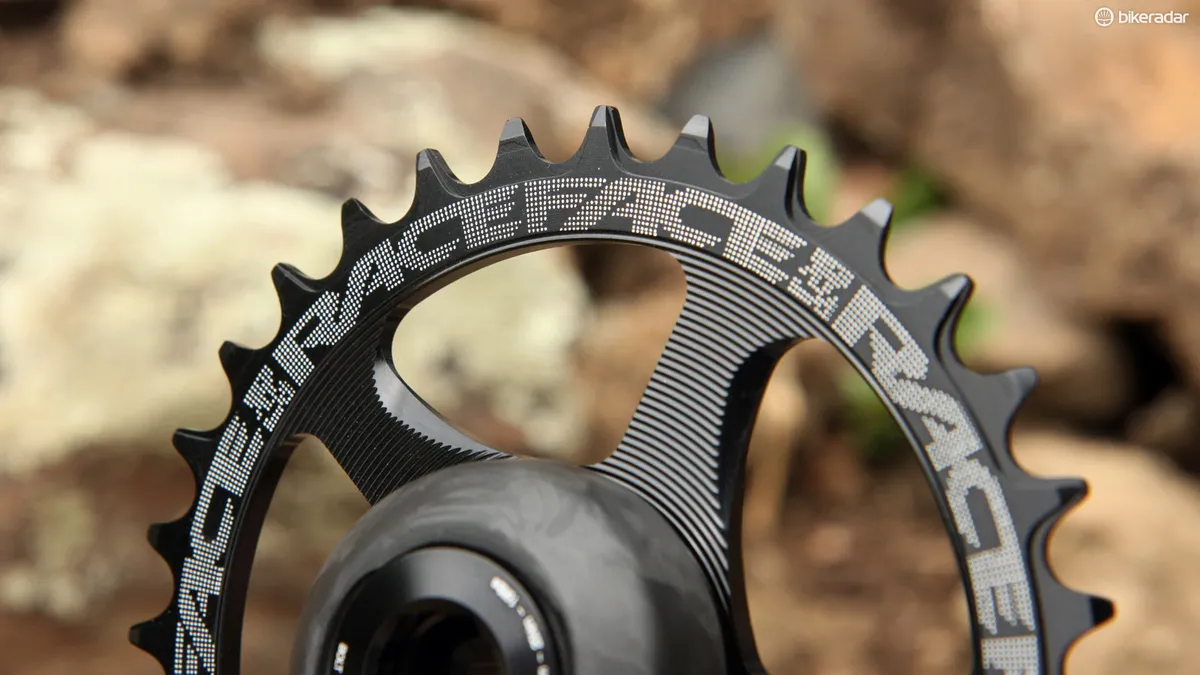
Narrow-wide chainrings are designed to improve chain retention of 1x drivetrains.
As the name suggests, they use an alternating narrow/wide tooth profile that matches (or meshes with) the inner and outer links of the chain.
By filling both the wide and narrow links perfectly, narrow-wide chainrings have a far superior connection with the chain compared to rings with standard tooth profiles.
The increased chainring-to-chain connection prevents excessive lateral movement and greatly reduces the risk of a dropped chain.
Oval chainrings
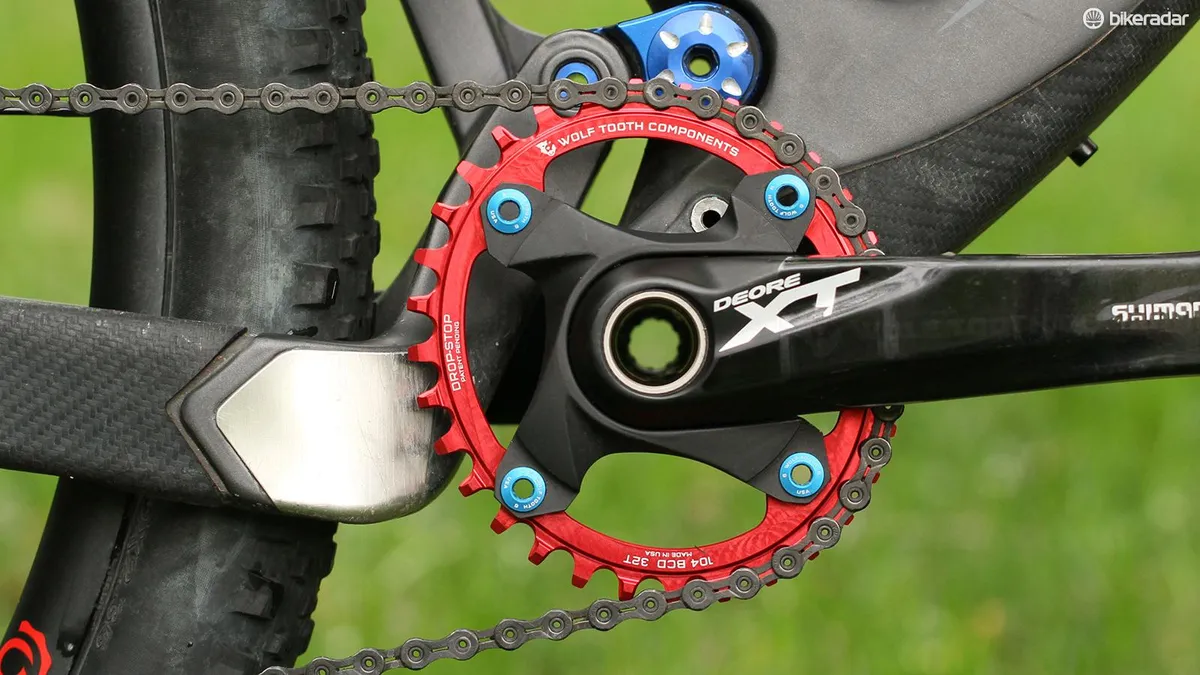
Oval chainrings are one of the more recent chainring designs, created to increase pedalling efficiency.
The theory behind this design draws on the fact that power delivery isn’t consistent throughout the pedal stroke. This means as your legs move around there are points in the cycle where less power is delivered to the pedals. These points are often where one leg is fully extended downwards and the other fully contracted upwards, with the pedals at the 12 and 6 o’clock positions.
According to AbsoluteBlack, an oval chainring manufacturer: “Oval chainrings maximise the part of the stroke where power is produced and minimise resistance where it isn't. As a direct consequence, oval rings enhance a cyclist’s ability to spin with a smoother power delivery.”
While the benefits available from an oval chainring will vary from rider to rider, depending on pedalling techniques and riding styles, oval chainrings could make a difference for riders who want to save energy on long, gruelling climbs.
What size chainring do I need?
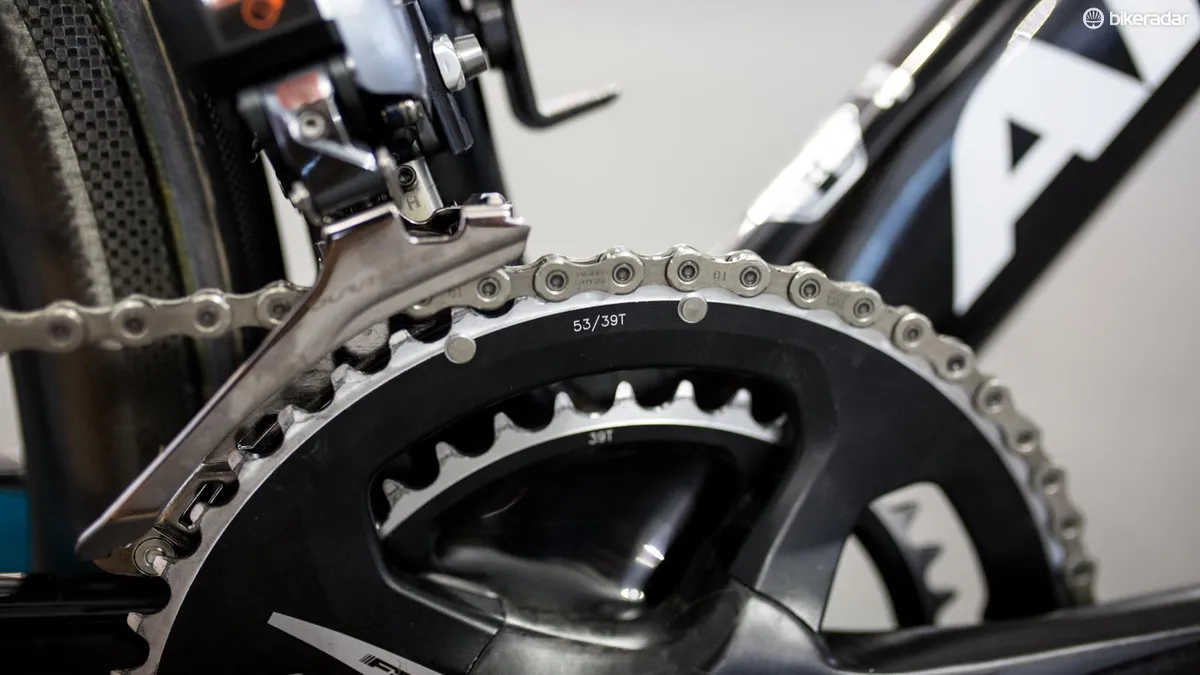
The size of the chainring influences the gearing of your drivetrain, with a larger chainring creating a harder gear and a smaller chainring creating an easier gear.
What size of chainring you need depends on the following factors:
- Your riding style and terrain
- Your fitness
- Your drivetrain setup
Most mountain bikes with 1x drivetrains come specced with a 32-tooth chainring as standard. This can then be swapped out for a 30t or 28t ring for easier gearing, or upsized to a 34t option for those looking for a harder gear.
For gravel bikes, 42t seems to be the industry standard, but there is lots of variation depending on whether the gravel bike is intended for fast or more technical off-road terrain.
You will often hear cyclists refer to three sizes of road bike double chainrings: standard (53/39t), semi-compact (52/36t) and compact (50/34t).
Many of the best road bikes now come with compact chainrings, but bikes equipped with groupsets from SRAM can have fewer teeth. SRAM Force, for instance, is available with chainrings with as few as 46/30t.
Most bike frames have an upper limit for the maximum chainring size you can use due to clearance between the chainring and chainstay. This may be stated in terms of chainring teeth, or diameter.
Wolf Tooth’s chainring diameter by tooth count guide is a useful resource to help you establish the maximum size you can use on your bike.
When to replace a chainring

Like most of the moving parts of your bike, chainrings are subjected to considerable amounts of wear and tear over time.
Dirt and grit that stick to the bicycle chain act like a grinding paste, wearing away at the chainring’s teeth with every pedal stroke.
Regularly cleaning your chain is a great way to extend the life lifespan of your drivetrain parts. Once the teeth of the chainring get worn down beyond a certain point, its chain retention will be greatly diminished and you might suffer from dropped chains and a creaky drivetrain.
It’s easy to tell if your chainring is worn down just by looking at it and feeling how it engages with the chain.
New chainring teeth are slightly rounded at the top and you should feel them holding onto the chain links if you try to lift the chain off the chainring (this is especially noticeable with a narrow-wide chainring). Worn chainrings often have sharp, pointy silver teeth. They will also have lost their anodising, and the tips of the teeth will be silver and shiny.
There may come a time when you need to replace a chainring. It’s a fairly straightforward job that often requires few specialist tools.
For an in-depth explanation, check out our guide to replacing your chainring.
Chainring BCD
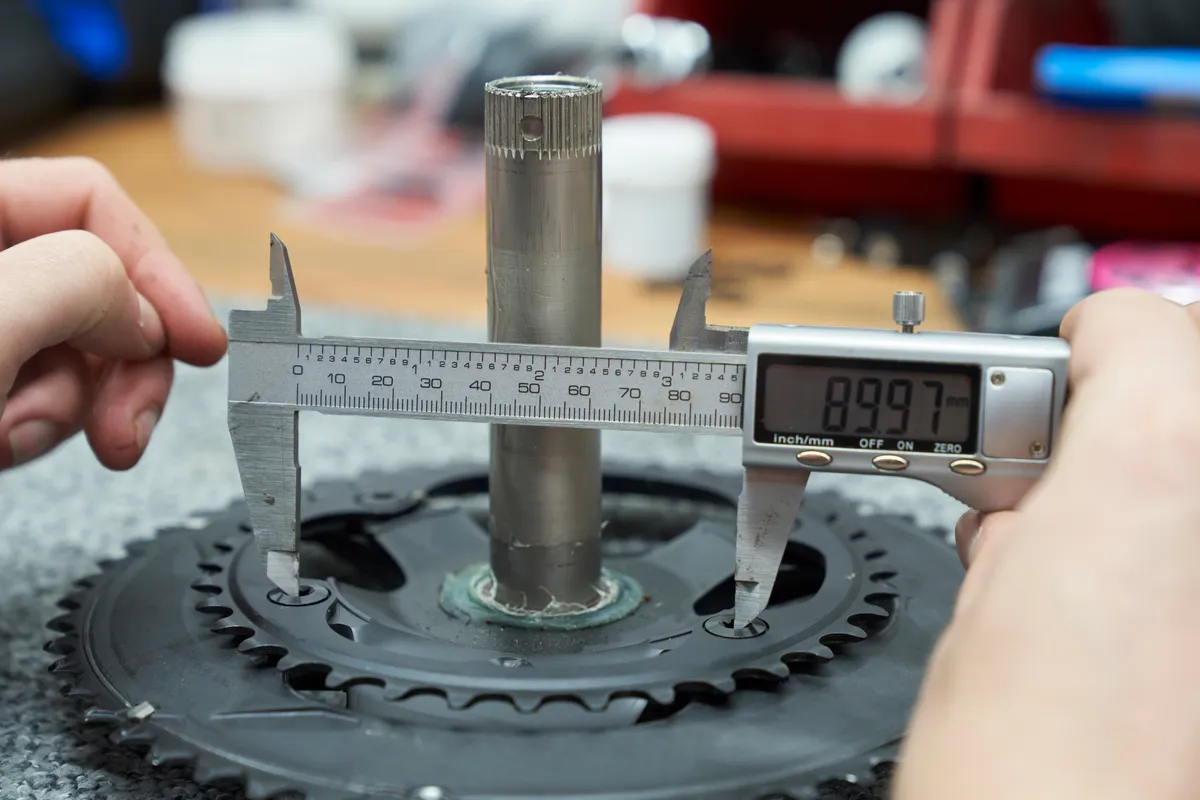
The bolt circle diameter (BCD) is a measurement (in millimetres), which refers to the diameter of the circle that goes through the centre of all of the bolts on your chainring. You'll need to know the BCD when replacing a bolt-on chainring.
The new chainring you are fitting must have the same BCD as the crankset, and the same positioning of the bolts, for it to fit. Most chainrings attach to the crankset’s spider via four or five bolts.
If you’re lucky, the BCD measurement will be engraved or stamped somewhere on the chainring or crankset, but if it’s not, you might have to measure it yourself.
To measure your BCD, you will need a vernier caliper or a ruler. On a crankset with four bolts, you can measure the distance between two bolts directly opposite each other.
On a crankset with five bolts, you’ll need to measure two bolts adjacent to each other and then use a look-up table to determine its BCD.
Direct-mount chainrings don’t have a BCD because they are mounted to a splined interface on the back of the crank, rather than bolting to the crank via a spider. However, direct-mount spindles vary from brand to brand, so it’s still important to check cross-compatibility.
